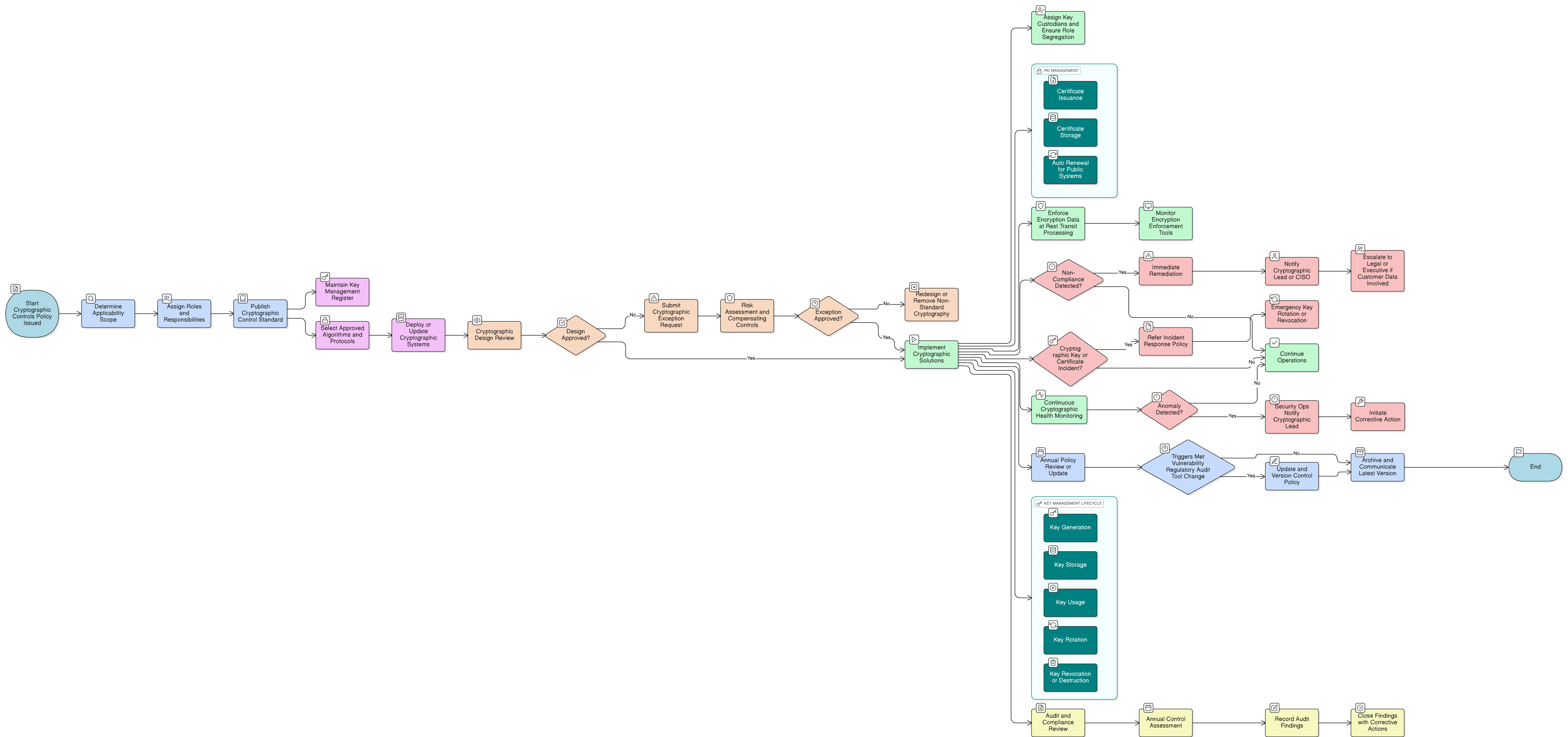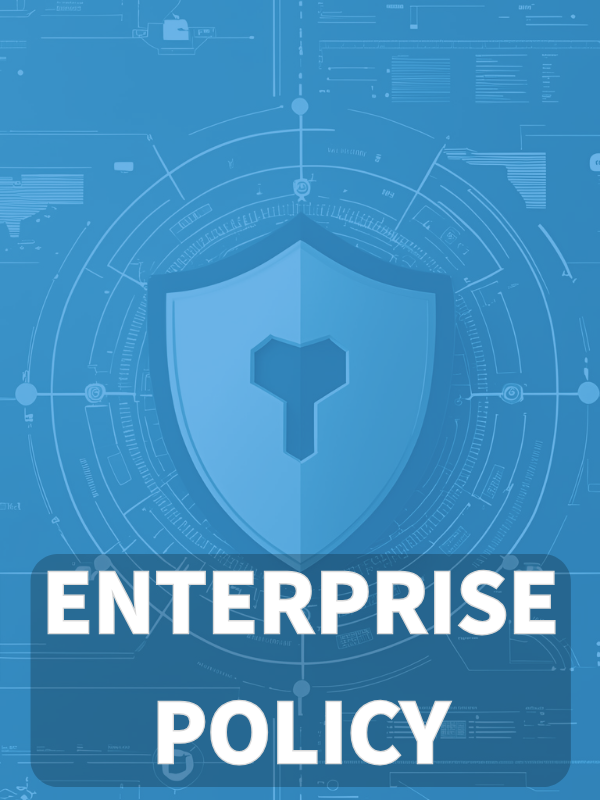Overview
This policy establishes requirements for secure, compliant use of cryptographic controls across the organization, detailing governance, algorithm approval, key management, enforcement, and audit processes in alignment with leading standards and regulations.
Comprehensive Encryption Policy
Defines mandatory use of cryptography to protect sensitive and regulated data at rest, in transit, and during processing.
Governance & Key Management
Standardizes key lifecycle, approves cryptographic methods, and enforces role segregation and custodianship.
Regulatory Compliance
Aligns with ISO/IEC 27001, NIST SP 800-53, GDPR, NIS2, DORA, and COBIT for comprehensive legal and audit readiness.
Continuous Review & Monitoring
Mandates annual reviews, cryptographic health monitoring, and proactive response to vulnerabilities and non-compliance.
Read Full Overview
Policy Diagram

Click diagram to view full size
What's Inside
Scope and Rules of Engagement
Roles and Responsibilities
Approved Algorithms and Protocols
Key Management Lifecycle
Exception Handling and Process
Audit and Non-Compliance Procedures
Framework Compliance
🛡️ Supported Standards & Frameworks
This product is aligned with the following compliance frameworks, with detailed clause and control mappings.
| Framework | Covered Clauses / Controls |
|---|---|
| ISO/IEC 27001:2022 | |
| ISO/IEC 27002:2022 | |
| NIST SP 800-53 Rev.5 | |
| EU GDPR |
Article 32Articles 33–34Recital 83
|
| EU NIS2 | |
| EU DORA | |
| COBIT 2019 |
Related Policies
Information Security Policy
Provides foundational governance for all security measures, including cryptographic control enforcement, asset protection, and secure communications.
Access Control Policy
Ensures logical access to cryptographic material and encryption management systems is strictly limited based on least privilege and segregation of duties.
Risk Management Policy
Supports the assessment of cryptographic control risks and documents the risk treatment strategy for exceptions, algorithm obsolescence, or key compromise scenarios.
Asset Management Policy
Mandates classification of sensitive data and hardware assets, which directly determines cryptographic requirements and key custody obligations.
Data Classification And Labeling Policy
Defines the classification levels (e.g., Confidential, Regulated) that trigger specific encryption requirements in transit and at rest.
Data Retention And Disposal Policy
Specifies procedures for the secure disposal of encrypted storage media and cryptographic key material at end-of-life.
Incident Response Policy
Outlines the organization’s response strategy for key compromise, certificate misuse, or suspected algorithmic vulnerabilities, including rapid revocation and breach reporting.
About Clarysec Policies - Cryptographic Controls Policy
Effective security governance requires more than just words; it demands clarity, accountability, and a structure that scales with your organization. Generic templates often fail, creating ambiguity with long paragraphs and undefined roles. This policy is engineered to be the operational backbone of your security program. We assign responsibilities to the specific roles found in a modern enterprise, including the CISO, IT Security, and relevant committees, ensuring clear accountability. Every requirement is a uniquely numbered clause (e.g., 5.1.1, 5.1.2). This atomic structure makes the policy easy to implement, audit against specific controls, and safely customize without affecting document integrity, transforming it from a static document into a dynamic, actionable framework.
Role-Based Cryptographic Oversight
Assigns and enforces clear responsibilities for cryptographic controls across CISO, IT, Control Owners, and third-party providers.
Centralized Key Management Registry
Implements a unified register tracking all cryptographic keys, lifecycle status, custodians, and compliance context.
Rigorous Exception Handling
Formalizes exception requests, risk review, and compensating controls for non-standard encryption, documented and auditable.
Frequently Asked Questions
Built for Leaders, By Leaders
This policy was authored by a security leader with 25+ years of experience deploying and auditing ISMS frameworks for global enterprises. It's designed not just to be a document, but a defensible framework that stands up to auditor scrutiny.
